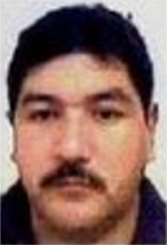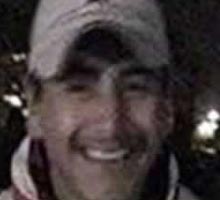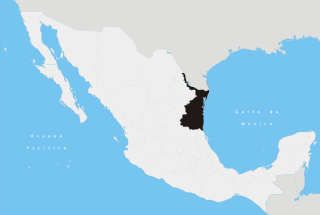
Osiel Cárdenas Guillén is a Mexican drug lord and the former leader of the Gulf Cartel and Los Zetas. Originally a mechanic in Matamoros, Tamaulipas, he entered the cartel by killing Juan García Abrego's friend and competitor Salvador Gómez, after the former's arrest in 1996. As confrontations with rival groups heated up, Osiel Cárdenas sought and recruited over 30 deserters from the Grupo Aeromóvil de Fuerzas Especiales to form the cartel's armed wing. Los Zetas served as the hired private mercenary army of the Gulf Cartel.

The Gulf Cartel is a criminal syndicate and drug trafficking organization in Mexico, and perhaps one of the oldest organized crime groups in the country. It is currently based in Matamoros, Tamaulipas, directly across the U.S. border from Brownsville, Texas.

Jorge Eduardo Costilla Sánchez, is a former Mexican drug lord and top leader of the criminal drug trafficking organization known as the Gulf Cartel. He was among Mexico's most-wanted drug lords.

Jesús Enrique Rejón Aguilar is a former leader of the Mexican criminal organization known as Los Zetas. He was wanted by the governments of Mexico and USA until his capture on July 4, 2011 in Atizapán de Zaragoza, a Mexico City suburb.
Gregorio Sauceda Gamboa is a Mexican illegal drug trafficker of the Los Zetas, when Los Zetas were the armed wing of the Gulf Cartel.

Iván Velázquez Caballero, also known by his alias El Talibán, is a Mexican convicted drug lord of the criminal group known as Los Zetas. The government of Mexico listed Velázquez Caballero in 2009 as one of its 37 most-wanted drug lords and was offering up to $30 million pesos, the equivalent of over $2.5 million USD, for information leading to his capture.

Samuel Flores Borrego was a Mexican drug lord and high-ranking lieutenant of the Gulf Cartel. He was a former state judicial policeman who protected the ex-leader of the Gulf cartel, Osiel Cárdenas Guillén. Upon his arrest, Flores Borrego became the right-hand man of Jorge Eduardo Costilla Sánchez, the former leader of the criminal organization.

Juan Reyes Mejía-González, commonly referred to by his alias R1, is a Mexican drug lord and high-ranking member in the Gulf Cartel who allegedly heads Los Rojos, a faction within the cartel.

Mario Armando Ramírez Treviño, commonly referred to by his aliases El Pelón and/or X-20, is a Mexican suspected drug lord and former leader of the Gulf Cartel, a drug trafficking organization.

Nabor Vargas García is a Mexican suspected drug lord and one of the founders of Los Zetas, a criminal group formed by former soldiers of the Mexican Armed Forces.

Gustavo González Castro, commonly referred to by his alias "El Erótico", is a suspected Mexican drug lord and founding member of Los Zetas, a criminal organization originally formed by ex-commandos from the Mexican Armed Forces. He joined the Mexican Army as an infantry soldier in 1990, and ascended to the corporal unit five years later. By 1999, however, González Castro had resigned and began working for the Gulf Cartel and Los Zetas along with several former military men.

Óscar Malherbe de León is a Mexican imprisoned drug lord and former high-ranking leader of the Gulf Cartel, a criminal group based in Tamaulipas. He was the main intermediary of the Gulf Cartel in Colombia, responsible for shipping large sums of cocaine from the Cali Cartel in the 1990s. Before becoming a drug trafficker, Malherbe worked as a shoeshiner and car washer. He then turned to the auto theft industry and was recruited in 1976 by Casimiro Espinosa Campos, a former leader of a cell within the Gulf Cartel. By age 22, the Mexican authorities had charged Malherbe with at least 10 homicides. In 1984, Espinosa was killed by Juan García Abrego, then-leader of the Gulf Cartel, who later appointed Malherbe as one of his top lieutenants and moneymen.
Rogelio González Pizaña, commonly referred to by his alias Z-2 and/or El Kelín, was a Mexican former drug lord and one of the founders of Los Zetas, a criminal organization originally formed by ex-commandos from the Mexican Armed Forces. Unlike the rest of the founders of Los Zetas, however, he did not serve in the Mexican Armed Forces before joining the drug trade.

Galdino or Galindo Mellado Cruz, commonly referred to by his alias El Mellado and/or Z-9, was a Mexican suspected drug lord and one of the founders of Los Zetas, a criminal organization originally formed by ex-commandos from the Mexican Armed Forces. He joined the Mexican Army in 1992 and was part of the Grupo Aeromóvil de Fuerzas Especiales (GAFE), an elite special forces unit of the Army. In 1999, he withdrew from the military and was recruited by the Gulf Cartel, a drug trafficking organization, shortly thereafter.

On 9 November 1999, two agents from the United States Drug Enforcement Administration (DEA) and Federal Bureau of Investigation (FBI) were threatened at gunpoint and nearly killed in Matamoros, Tamaulipas, Mexico, by gunmen of the Gulf Cartel, a criminal group based in the area. The two agents traveled to Matamoros with an informant to gather intelligence on the operations of the Gulf Cartel. As they cruised through one of the properties owned by the criminal group, they noticed several vehicles following them. The agents were forced to a stop and were corralled by a convoy of eight vehicles, from which fifteen gunmen emerged and surrounded the agents' car. Some of them wore uniforms of the local police. Among the gunmen was the former kingpin Osiel Cárdenas Guillén, who recognized the informant and ordered the three of them to get out of their vehicle.

Juan Carlos de la Cruz Reyna is a Mexican convicted criminal and former high-ranking member of the Gulf Cartel, a criminal group based in Tamaulipas, Mexico. He was also a senior member in Los Zetas, the Gulf Cartel's former paramilitary group. In the 1990s, de la Cruz Reyna was an officer in the Tamaulipas State Police while working as a hitman for the Gulf Cartel. After he left the agency in 1999, he became a bodyguard for former Gulf Cartel kingpin Osiel Cárdenas Guillén, and was eventually promoted to regional leader of the cartel in Tampico. He reportedly had policemen on his payroll, and managed international drug trafficking shipments from Central and South America.

Víctor Manuel Vázquez Mireles is a Mexican drug lord and high-ranking member of the Gulf Cartel, a criminal group based in Tamaulipas, Mexico. Vázquez Mireles joined the cartel during the 1990s and was a trusted enforcer of former kingpin Osiel Cárdenas Guillén. He started his career in the cartel as one of his bodyguards and was eventually placed in charge of operations in Tamaulipas and Veracruz. He was reportedly responsible for supervising the purchase of drugs intended to be smuggled into the U.S. for distribution and for arranging the assistance of corrupt law enforcement officials in the cartel's operations.

Gilberto Lerma Plata is a Mexican former police chief and convicted drug lord. He began his career in 1993 as a police officer in the Tamaulipas State Police when his cousin Manuel Cavazos Lerma became Governor of Tamaulipas. Lerma Plata was eventually promoted to police commander in Reynosa and Miguel Alemán. In the late 1990s, while still working for the police, Lerma Plata joined the Gulf Cartel, a criminal group based in Tamaulipas, for whom he facilitated drug trafficking operations from Mexico to the US, coordinated cash smuggling operations, and aided in the procurement of firearms.

Gilberto Barragán Balderas is a Mexican suspected drug lord and high-ranking member of the Gulf Cartel, a criminal group based in Tamaulipas, Mexico. He joined the cartel in the late 1990s and was a trusted enforcer of kingpin Jorge Eduardo Costilla Sánchez. Barragán Balderas was the regional boss of Miguel Alemán and helped coordinate international drug trafficking shipments from South and Central America to Mexico and the U.S. His role in the cartel also included providing them with information on the movement and location of Mexican security forces to ensure safe passage of their cocaine and marijuana shipments. In 2008, an indictment issued by the U.S. District Court for the District of Columbia detailing his criminal activities was unsealed in court.

Ediel López Falcón, also known as La Muela or Metro 5, is a Mexican convicted drug lord and former high-ranking member of the Gulf Cartel, a criminal group based in Tamaulipas, Mexico. He was the regional boss of Miguel Alemán and helped coordinate international drug trafficking shipments from South and Central America to Mexico and the U.S. His roles in the cartel were also to coordinate oil theft operations. In 2012, he was indicted by the U.S. District Court for the District of Columbia for drug trafficking activities. After fleeing Mexico to avoid gang-related violence, López Falcón was arrested in Texas during a sting operation in 2013. He pleaded guilty and was sentenced to 18 years in prison in 2015. He is currently imprisoned at the Federal Correctional Institution, Fort Dix in New Jersey. His expected release date is in 2029.















